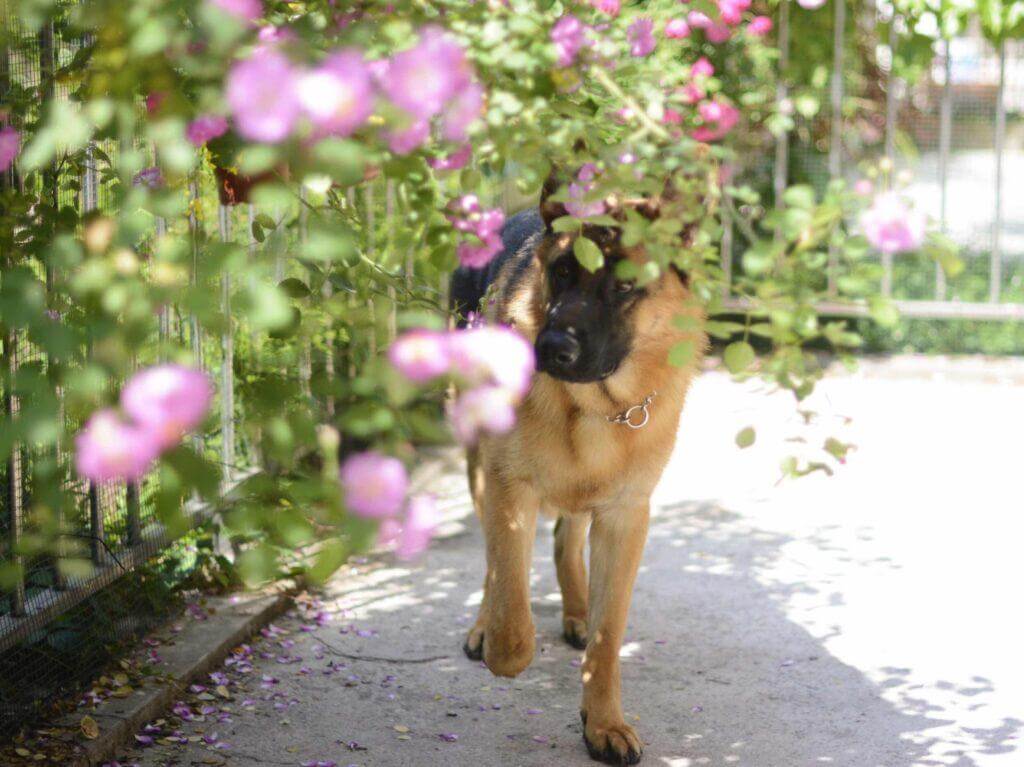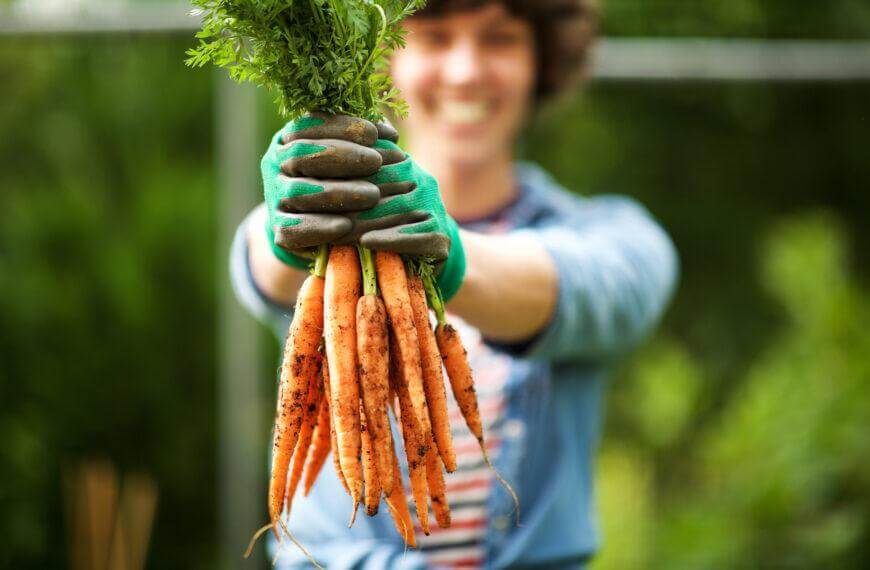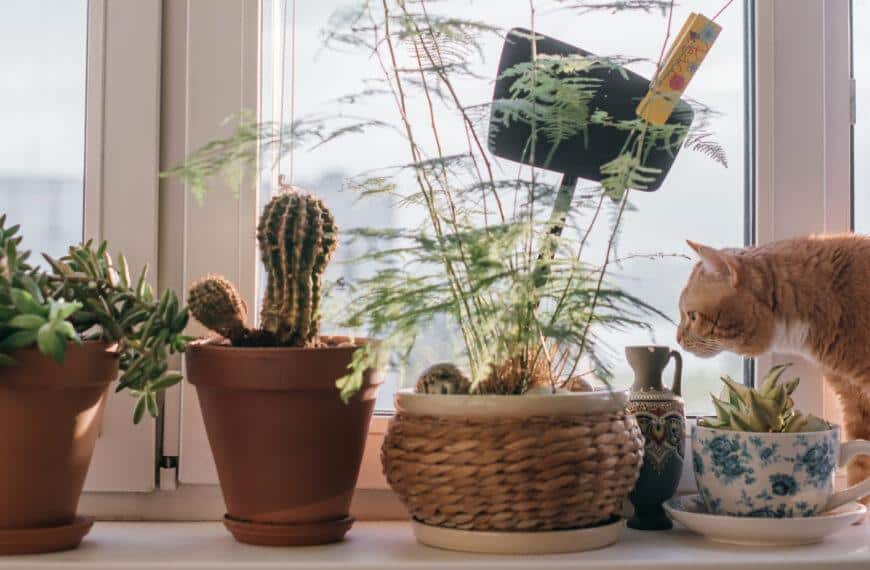Key Takeaway:
- Are Plants Toxic to Dogs: Pet owners must know the potential dangers of certain plants in their homes or yards and educate themselves about which plants to avoid.
- Identifying Symptoms of Plant Poisoning: Symptoms of plant poisoning in pets can range from mild to severe and can include vomiting, diarrhea, lethargy, and even death. You must seek veterinary care immediately if you suspect plant poisoning in your pet.
- Highly Toxic Plants for Pets: Several plants are highly toxic to pets, including lilies in cats, mushrooms/fungi, and giant hogweed. These plants should be avoided at all costs to keep your pets safe.
Pet owners and gardeners, are you looking for tips to make a pet-safe garden? No need to look any further! This blog has all the info you need. Get the knowledge you need to make a paradise for you and your four-legged friends. Learn how to avoid plants that could harm your furry companion.
Understanding Plant Poisoning in Pets
Understanding the Toxicity of Plants on Pets:
Pets are curious creatures who explore their surroundings, including the garden. It is important to note that some plants can be toxic to pets, causing mild to severe symptoms like vomiting, swelling, rashes, and ulcers. The poisonous variety includes autumn crocus, azalea, rhododendron, horse chestnut, oak, peace lilies, potato plants, yew, bulbs, berries, and mushrooms. Pet owners must know these poisonous plants to keep their pets safe.
Monitoring pets while in the garden is crucial to prevent the consumption of plant parts or greenery. Ingestion of toxic plants can result in gastrointestinal problems, nausea, and other poisonous ingestion symptoms. Furthermore, pet owners must note the toxicity symptoms and seek medical attention promptly if they notice them.
As pet owners, it is essential to prioritize plant safety in the garden and prevent the presence of dangerous plants. Avoid planting toxic bulbs or poisonous plants like lilies, autumn crocus, mushrooms, fungi, and giant hogweed. Pets should be discouraged from eating grass seeds and any pesticides or weed killers used in the garden. Pet owners should also dispose of plant cuttings properly and avoid putting them into compost bins to prevent further poisoning.
A real-life case of plant toxicity involves a dog that ate parts of a peace lily, causing severe vomiting and irritation in the mouth. The dog was rushed to the vet and treated successfully. This case emphasizes the importance of pet safety and awareness of potential hazards in the garden. Pet owners can keep their pets safe and healthy by identifying and avoiding toxic plants.
Identifying Symptoms of Plant Poisoning
Pets can experience varying degrees of plant poisoning when consuming certain toxic varieties. Understanding the symptoms of plant poisoning can help identify early warning signs and prevent further harm to pets.
- Symptoms may include vomiting, diarrhea, drooling, lethargy, and depression.
- Other symptoms can include skin irritations, respiratory distress, and irregular heartbeat.
- Some plants, such as conkers, acorns, and mistletoe, can result in more severe symptoms, such as seizures and even death.
It is essential to be familiar with the list of poisonous plants and keep them out of pets’ reach. However, some pets may have different eating habits and try to consume plant varieties that are typically considered safe. Observing any changes in behavior or physical symptoms can be critical in identifying plant ingestion.
A Pro Tip for pet owners is to avoid bulb planting in areas accessible to pets, as bulb toxicity can harm their health.
Remember, promptly identifying symptoms of plant poisoning can prevent severe consequences for pet health and reduce plant hazards in the garden. Being mindful of plant consumption and maintaining garden safety can ensure a happy and healthy pet environment.
Highly Toxic Plants for Pets
As I dug deeper into the world of gardening as a pet owner, I discovered that some common plants are particularly harmful to our furry friends. In this segment, I’ll focus on the highly toxic plants for pets that every pet owner should be aware of.
First, we will explore the dangers of lilies for cats and how they can cause kidney failure. Next, we’ll uncover the harmful effects of consuming mushrooms and fungi, which can lead to vomiting, seizures, and death. Lastly, we’ll delve into the lesser-known giant hogweed that can cause severe skin irritation and blindness if consumed.
Let’s learn how to identify and avoid these toxic plants to protect our pets.
1. Lilies in Dogs
Dogs and Lilies: A Potentially Deadly Combination
Lilies contain highly toxic toxins to dogs, whether ingested or coming into contact with pollen. Eating any part of a lily plant, including the leaves, flowers, bulbs, and stems, can cause severe harm to a dog’s kidneys; even small amounts can be fatal.
It is crucial to keep all lily plants away from areas where your dog can access them. Some examples of indoor and outdoor lilies include peace lilies, Asiatic lilies, calla lilies, day lilies, tiger lilies, Easter lilies, and Madonna lilies. If you suspect your dog has come into contact with any lily plant or have observed poisoning symptoms such as vomiting or lethargy, you should immediately take them to the vet.
Pro Tip: If you are unsure about which plants are toxic to dogs, it is essential to research before bringing them into your home. Educating yourself on garden hazards will ensure the safety of your furry friend.
2. Mushrooms/Fungi
Fungal Growth
Fungi are a natural part of the plant world and play an essential role in breaking down organic matter. However, some fungi can harm dogs, causing symptoms ranging from mild irritation to severe illness or even death.
- Identify toxic mushrooms – Many varieties of mushrooms are poisonous to dogs. Symptoms range from stomach upset to organ damage. Contact your vet if you suspect mushroom poisoning.
- Avoid evergreen shrubs and trees – Holly and yew plants, though evergreen with red berries, can cause severe symptoms when ingested by dogs.
- Winter-flowering plants – Daphne and winter jasmine might irritate your dog’s skin or digestive system.
- Bulbs toxicity – Daffodil bulbs contain compounds that cause vomiting, diarrhea, abdominal pain, and even heart damage if ingested by dogs.
- Avoid Cotoneaster, Cordyline & Dracaena – When ingested, landscape plants cause vomiting and diarrhea, while ingestion of Dumbcane causes tongue swelling in dogs.
While this list is not exhaustive, it should help pet owners identify common fungi that can be dangerous to their pets.
Pro Tip: If you notice your dog exhibiting signs of poisoning after ingesting any plant material, immediately take your pet to the vet for diagnosis and treatment options.
3. Giant Hogweed
This plant with large leaves and umbrella-shaped flower heads is known for its towering height and is often called ‘the botanical bully.’ It goes by the name Heracleum mantegazzianum, and its toxic sap contains phototoxic compounds that can cause severe burns, scarring, and vision impairment. This invasive species is native to Central Asia but was accidentally introduced to various countries across North America and Europe.
Giant Hogweed poses a severe risk to both humans and pets. Its 2-4 feet in diameter white flowers bloom in late spring to early summer, followed by the development of seeds that can grow up to five feet tall. As these plants age, their decaying foliage makes them more dangerous as it releases the sap. Although some people have used Giant Hogweed for herbal remedies or consumed its seeds like fennel or cumin, this plant is highly toxic.
Pet owners should know about the poisonous plant’s list, including Giant Hogweed since dogs can also get exposed to sap when walking through an infested area. Poisonous plant symptoms include skin irritation, blistering, excessive drooling, vomiting, diarrhea, abdominal pain, seizures, and hallucinations. In case of accidental ingestion or contact with the skin or eyes of a dog with bodily fluids from the plant’s cut stem or leaf stalks resulting in bulb toxicity, consult a veterinarian immediately.
Despite strict regulations in place in many areas globally concerning keeping this invasive weed under control due to its harmful effects on health and animal welfare, including winter-flowering giant hogweed remains stubbornly persistent. A concerted effort by nations introducing policies including herbicide use has had varying degrees of success over recent years, so call lines monitoring the spread to continue for pet owners concerned about their dogs suffering the debilitating effects of exposure.
Poison
In Gardening for Pet Owners, understanding plants toxic to dogs is crucial. Certain plants contain compounds that are poisonous to canines. These toxins can cause symptoms ranging from gastrointestinal upset to seizures and even death. Awareness of poisonous plants is essential to maintain the safety of pets in the garden and at home.
It’s important to know that various types of plants can be toxic to dogs, including indoor and outdoor plants. Common outdoor poisonous plants include azaleas, lilies, daffodils, and tulips, while indoor plants like peace lilies, pothos, and snake plants can also be toxic. Symptoms can vary depending on the type of plant ingested and the amount consumed.
Ingestion of toxic plants can be fatal for dogs. For instance, in chewing gum and candy, xylitol may cause low blood sugar or liver failure in dogs. Careful monitoring of the garden and home is necessary to ensure dogs’ safety, as some plants – even those that are non-toxic to humans – can be harmful to furry friends.
One pet owner shared a personal experience with a poisonous plant. After planting daffodils in the front lawn, her dog started to vomit and displayed signs of lethargy. The owner rushed the dog to a veterinarian, where it was diagnosed with toxicity due to daffodil ingestion. It took two days of intense treatment, and the dog’s health was ultimately restored. This incident highlights the importance of awareness of poisonous plants and their adverse effects on dogs.
It’s important to always keep current on the “poisonous plants list” and research the potential toxicity of all plants before bringing them into the garden or home. Planting non-toxic plants and keeping a safe distance from poisonous ones is essential to guarantee the safety of pets.

Five Facts About Gardening for Pet Owners: Avoiding Plants Toxic for Dogs:
- ✅ Many common plants, such as lilies, daffodils, and azaleas, are toxic to dogs and can cause severe health issues. (Source: ASPCA)
- ✅ Symptoms of plant poisoning in dogs may include vomiting, diarrhea, seizures, and even death. (Source: American Kennel Club)
- ✅ Gardening experts recommend pet owners choose non-toxic plants, such as petunias, marigolds, and snapdragons, to create a pet-friendly garden. (Source: Better Homes & Gardens)
- ✅ Avoid mulch made from cocoa beans, as it can be toxic to dogs and cause vomiting and diarrhea. (Source: PetMD)
- ✅ It’s essential for pet owners to research the toxicity of plants before introducing them to their homes or garden. (Source: Pet Poison Helpline)
FAQs about Gardening For Pet Owners: Avoiding Plants Toxic For Dogs
Q: What are some common plants toxic to dogs?
A: Some common plants toxic to dogs include azaleas, lilies, tulips, daffodils, chrysanthemums, and apple seeds. For a complete poisonous plant list, consult your veterinarian or check online resources for pet owners.
Q: How can I determine if a plant is toxic to my dog?
A: You can check your veterinarian’s poisonous plant list or an online resource for pet owners. You can also consult with a garden center or nursery to verify the safety of the plants you wish to purchase for your garden.
Q: What should I do if my dog ingests a toxic plant?
A: Contact your veterinarian immediately. Plant toxicity symptoms can range from mild to severe, including vomiting, diarrhea, drooling, lethargy, and difficulty breathing. Your veterinarian can provide appropriate treatment based on the level of toxicity and symptoms.
Q: Can I still have a garden if I have a dog?
A: Yes, you can have a garden with a dog. Simply choose non-toxic plants and vegetables for your garden. Be sure to also provide a designated area for your dog to play and exercise away from your garden plants.
Q: Are there any benefits of having plants in my garden for my dog?
A: Yes, there are several benefits. Plants can improve the air quality, provide shade and shelter for your dog, and even help deter pests such as mosquitoes and fleas. Just be sure to choose non-toxic plants to ensure the safety of your furry friend.
Q: How can I keep my dog from eating my garden plants?
A: You can use natural deterrents such as orange or lemon peels, vinegar, or cayenne pepper around your garden to keep your dog away from the plants. You can also train your dog to stay away from your garden plants by teaching them basic commands and positive reinforcement.




